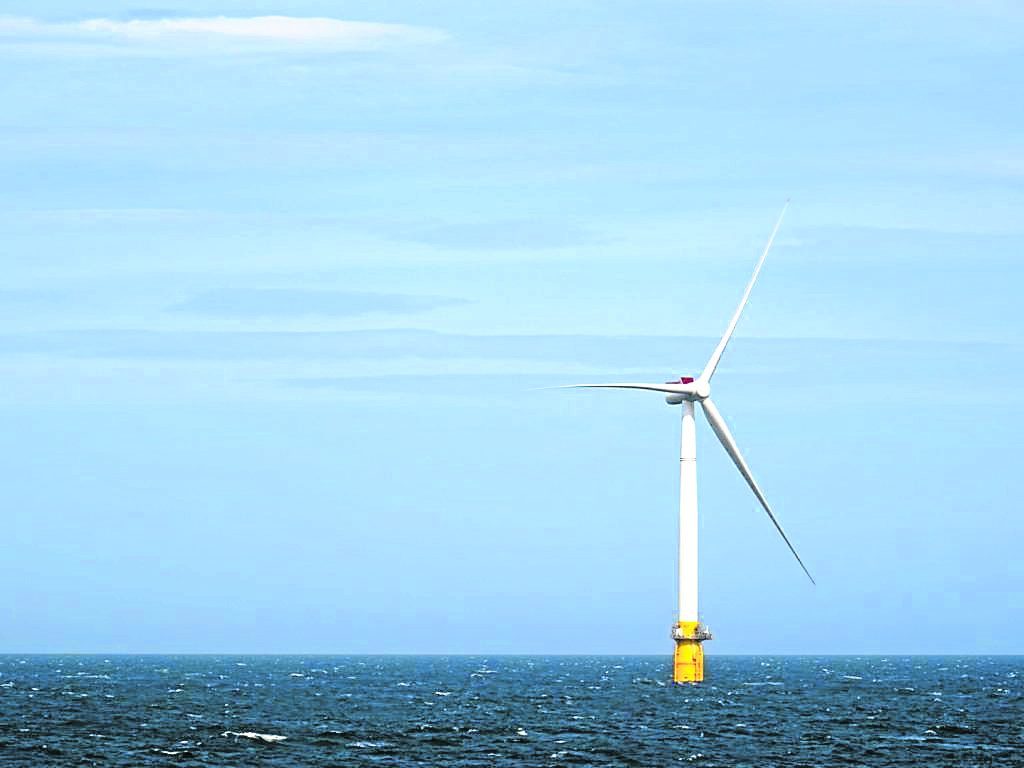
Scotland could see an influx of new build windfarms due to change in the way the seadbed around the country’s coasts is leased out to developers.
Crown Estate Scotland – the body responsible for the leasing – is to start discussions with industry, government and interested organisations to prepare for potential new offshore arrangements
A range of agencies, non-governmental organisations and marine sectors will be involved in informing the approach to leasing, with a view to ensuring new projects can start to operate from the late 2020s and beyond.
Current offshore wind projects in waters around Scotland includes 211MW in operation and 680MW in construction.
The proposed new leasing will potentially see more seabed used by developers to build commercial-scale (100MW+) floating and / or fixed offshore wind farms.
It follows figures released in September showing a sharp fall in the cost of offshore wind electricity.
The recently announced ‘Clean Growth Strategy’ also included a commitment from the UK Government to work with Crown Estate Scotland and The Crown Estate to understand the potential for deployment of offshore wind in the late 2020s and beyond.
John Robertson, senior development manager at Crown Estate Scotland said: “We have now started to consider if and how to issue new leasing rights for commercial-scale offshore wind projects.
“This will include speaking to local, Scottish and UK stakeholders in 2018 to understand their views on our proposed approach.
“The waters around Scotland have fantastic potential, particularly for developments in deeper waters.
“With costs being lowered and jobs created throughout the supply chain, new leasing has the potential to benefit communities, consumers and the climate.”
Scottish Government minister for business, innovation and energy, Paul Wheelhouse MSP, said: “The potential benefits of offshore wind energy are enormous, given Scotland’s very extensive maritime area and estimated 25% share of Europe’s wind energy potential.
“Investment in renewable energy, such as offshore wind, will not only stimulate economic growth, but can also help to lower electricity prices in the future and significantly reduce greenhouse gas emissions and, thereby, mitigate the impacts of climate change.
“We want to maximise the huge potential of this industry and its supply chain here, in Scotland, and so I welcome Crown Estate Scotland’s efforts to identify future licensing opportunities and look forward to working with CES as they manage Scotland’s marine assets directly on behalf of Scottish Ministers.”
UK Government energy minister, Richard Harrington, said: “The offshore wind sector in the UK has shown great ambition and is bringing forward clean energy projects that could power more than 3 million homes, at half the cost achieved in previous auctions.
“Our Clean Growth Strategy sets out that the UK could support another 10GW of offshore wind in the 2020s, with the opportunity for more if it’s cost effective. This announcement today is an important step towards these future projects.”
It can take developers around nine years from securing an initial agreement for an area of seabed, taking their proposal through pre-planning and consenting into construction, to then start generating electricity.
Offshore wind directly benefits communities across Scotland by creating jobs, reducing climate change emissions and contributing to the profits that Crown Estate Scotland passes to the public purse.
Crown Estate Scotland’s role in offshore renewable energy is that of landlord, catalyst and supportive partner. Marine Scotland as the regulator is responsible for environmental considerations, regulatory compliance and assessing consent applications.
Recommended for you
